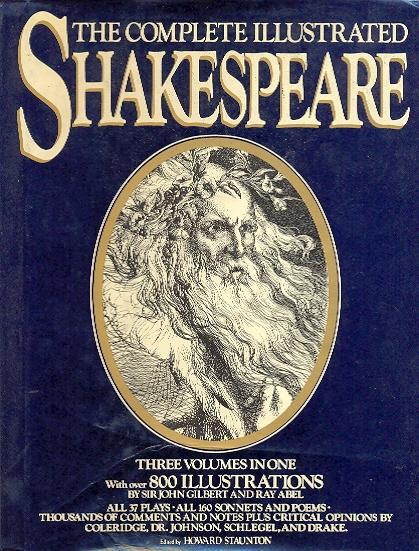
Edward Winter
We begin with a digest of items from old chess literature about connections between chess and William Shakespeare.
‘Mr Staunton has evidently edited the works of the great dramatist in a very loose way. If this were not the case, we should have had somewhere in the bulky volume some notice of the chess life of Shakespeare. That he must have possessed a large knowledge of the game is evident from the hastiest perusal of his divine writings. He speaks in Winter’s Tale of an “unkind mate” – and what chessplayer, who has been suddenly and ruthlessly mated at a moment when victory seemed about to perch upon his banner, does not know what that means? In some Morphic Evans, when towards the close of the encounter, the Amazonian queen, the militant bishop and the gallant knight bear bravely down upon the unlucky opposing king, what better describes the terminating struggle than the “warlike mate” mention in Henry VI? In the same play we find an allusion to an “unknown mate” or a mate given by one skilled in the written theories of chess. When, in King Lear, the renowned playwright speaks of “one self-mate” he unfortunately neglected to tell us to what particular suicidal problem he refers. How naturally Antipholus of Syracuse, in the Comedy of Errors, apparently wrought up into an insane excitement by the disastrous result of a combat on the sable and silver field of chess, exclaims that he is “not mad, but mated”. In a pretty punning way, in another play, Elinor accuses Constance of wishing Arthur to be King, in order that she may “be a queen and check the world”. Leontes of Sicily found that the “loss of his most precious Queen” was a thing to be “lamented”, as many men have done in these later times. The expression of Suffolk, “My King! tush! that’s a wooden thing!” shows what the material of chessmen was in the elder period of English chess history. In King John we discover a sort of proverbial reference to a close and crowded game in the comparison, “To lie like pawns, locked up”. In The Taming of the Shrew Katharine says,
“I pray you sir, is it your will,
To make a stale of me amongst these mates?”And we might multiply quotations to prove how intimately the dramatist understood the nature of the game and its cultivators. We have had volumes on Shakespeare as a lawyer, and Shakespeare as a moralist. Pray, Mr Commentator Staunton, will you give us a tome on Shakespeare as a chessplayer?’

‘“Though it has been surmised”, says George H. Ely, “that the scene in The Tempest in which Ferdinand and Miranda are discovered playing chess was introduced because Ferdinand was Prince of Naples, and in Shakespeare’s time Naples was the headquarters of chess play, there is no necessity for supposing that the dramatist had any purpose other than that of showing the lovers in a pretty and engaging attitude. It is notable, however, that nowhere else does Shakespeare make any direct reference to chess. Unlike Bacon and many other writers, he never uses its term by illustration or metaphor. The inference which these facts seems to warrant is that for Shakespeare the game had no great amount of attraction.”’
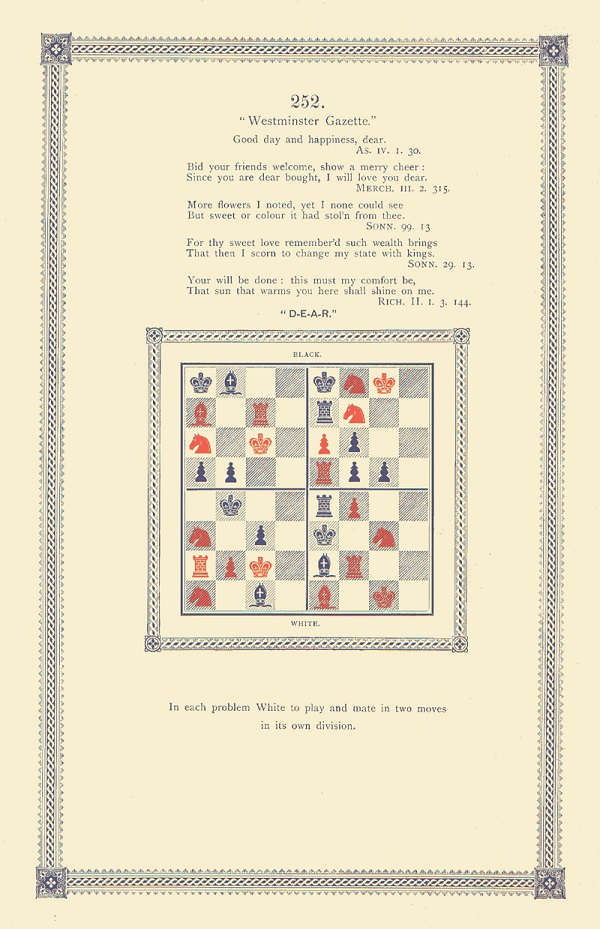
On page 301 of the July 1916 Chess Amateur P.H. Williams wrote:
‘I think it was Mrs Baird who did more to search Shakespeare for accidental (or deliberate) reference to chess, since all her retractors had Shakespearean mottoes, and her knowledge of the Avonian bard was obviously extensive. Her example was followed by other composers of retractors, who considered such positions would be incomplete without some reference to the poet.’
‘... The artistic conscience sometimes makes him who has it a coward – or, let us say, a Hamlet of the chess board.
I wonder if Hamlet was a chessplayer. From his character it seems indeed likely. If he was, he probably played a weak but imaginative game, with a craving to improve upon the best move and therefore often missing it.
Hamlets of the chess board are frequent types. Once in the meshes of combination they lose themselves in its intricacies, and evolve ideas that are so infinitely subtle that they have no vitality. Then is the moment when fate, usually with a somewhat brutal, matter-of-fact blow, wakes them out of their dreams.’
Lasker’s remarks were quoted on page 152 of the July 1908 American Chess Bulletin (courtesy of The Australasian) and on page 108 of the May 1911 American Chess Bulletin. They originally appeared in his column in the New York Evening Post, 26 October 1907, page 7.
‘... an original painting of Shakespeare, for which it is said that the late J.P. Morgan was prepared to offer $1,000,000 on proof of its authenticity, is now in possession of Mrs Catherine de Heyman, of 269 Carlton Avenue, Brooklyn. Its history has been thoroughly investigated, and it is said that the possessor now has absolute proof that the painting is genuine ...The picture is 30¾ inches in height and 38 inches wide and is painted on chalked linen, which was stretched over a frame. It is full of slits and cracks but is still fresh and beautiful in color. It represents Shakespeare playing a game of chess with his friend Ben Jonson, who was also a dramatist.
Investigation by the learned Dr Paul Wislicenus of Darmstadt, a member of the German Shakespeare Society, has resulted in ascribing the de Heyman painting to the brush of Karel van Mander as being one of his best works.
He says “The picture shows the hand of a master, at the turn of the sixteenth and seventeenth centuries. The style of painting betrays the Titian school, then approaching the rococco. The composition is that of the Netherlands ...”’
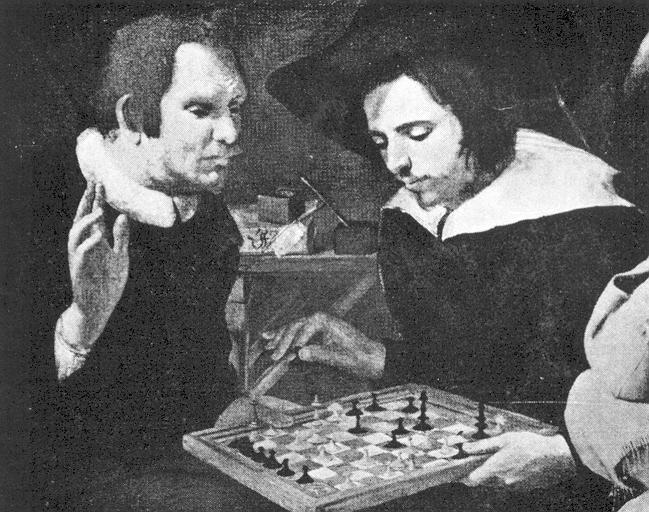
An attempt was also made to reproduce the position (although other proposals have been seen over the years):
‘White: B. Jonson
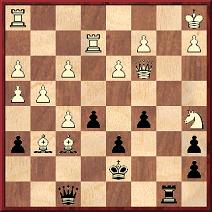
Black: W. Shakespeare
The bishop in the hand of the player takes the white queen mate.
(Position of white pawns is impossible.)
Shakespeare holds a black bishop in his right hand which he has taken from Black’s KKt5 square [sic]. Bishop takes queen mate. The mediaeval shapes of the white bishop at QB3, the black bishop and the white rook at Q7 are of interest.
The same designed bishops are given in the diagrams of the Alfonso Spanish 1283 Manuscript, and the double-headed rook appears in Caxton’s London 1480 edition.’
‘If “absolute proof” why did not the owner of the picture secure that million dollars? We are sorry to throw cold water on anything that ought to be true, but the authorities re Shakespeare would say that there is no picture in existence of Shakespeare playing at chess or any game, and never has been so far as can be known. Ditto Ben Jonson. Further, that there is no evidence of Shakespeare having ever been a chessplayer. Of course he knew what the game looked like, and must have known some chessplayers. He probably knew the names of the pieces and how they should be placed for play. He may have known the moves. Possibly he played the game occasionally. He shows us Ferdinand and Miranda playing at chess, and Miranda complains of an illegal move, which Ferdinand denies making. Otherwise there is no clear allusion to chess in all “Shakespeare”. There are several possible references, the most likely being the line “She shall be Queen, and check the world.” Probably this was a conscious reference to chess, the more so that the chess queen, in England, had not long had her full power of checking at long range. There are several cases of the word “mate” being used – as “mated and stark mad”. But the word in Shakespeare’s time, though obviously derived from “checkmate”, in the chess term, was often used by non-chessplayers, with the meaning of “beaten”, “confused”, “bewildered” or “amazed”.’
The above item had also been quoted on page 12 of the October 1915 Chess Amateur. Page 44 of the November 1915 issue gave information about the painting and the diagram, courtesy of the Good Companion Problem Club Bulletin.
‘Much of the terminology of chess has passed into the language of everyday speech. No-one whose intellectual development has progressed beyond the point necessary to a perfect comprehension of the elementary principles of “Marbles” would fail to understand the meaning of such a word, for instance, as “Check” when used to describe some annoying situation in one’s daily life; nor is it possible to imagine any similar difficulty occurring to anyone in Shakespeare’s day when confronted with an idiom borrowed from the nomenclature of a game that was already centuries old; with a literature of its own extending back to ages of fable and myth.’
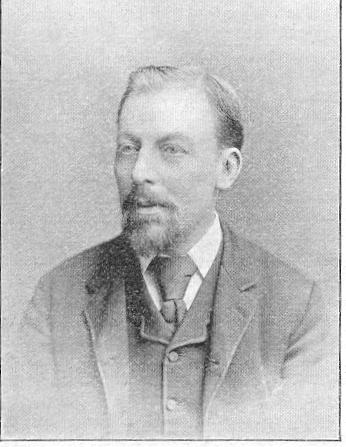
William Shelley Branch
‘I have seen a small reproduction of the alleged Shakespeare-Jonson picture, and am interested. It looks old and good. I think the artist meant to represent Shakespeare and Jonson. If so the question is, was the picture printed in Shakespeare’s time?
Up to date I doubt it.
If the picture were accepted by all authorities as being what it claims to be it would be very strong evidence – taken with other things – that Shakespeare and Jonson could play chess, and sometimes did.
A possibility is that the picture was painted in 1603 and signed as stated (though signing at that period was not usual) but had no connection with Shakespeare or Jonson. The likeness may be accidental. The players may have been two Dutchmen.’
‘Only one who knew the move and power of the chess queen would have written this line.
... I do not suppose that Shakespeare was a chess expert, but for the reason I have given, and a few others, I believe he could play chess. He introduces the game into one play, The Tempest. He knew all sorts and conditions of men, many of them men of culture. He had had a good education himself and was a very well-read man. Among his friends and acquaintances there must have been many who played chess. The game was then more widely known and more popular, in proportion to population, than it has been since Shakespeare’s time. It went down very much with the rise of Puritanism and the Civil War, followed by a greater amount of card-playing and many other distractions later.’
Also on page 205 H.M. Holgate stated regarding the painting: ‘Personally, I am inclined to believe that this “old-master” will turn out to be a “fake”.’
‘The inscription on the portrait proves to the entire satisfaction of Dr Wislicenus that the chess game refers to the famous “Stage Quarrel” and, consequently, to Troilus and Cressida.
“We have such a complete agreement between Mander’s picture and Shakespeare’s genuine death mask”, writes Dr Wislicenus, in a private report comprising 100 typewritten pages in the possession of Mrs de Heyman, “that the fact of Mander’s having painted the poet from the life, either in Holland or in England – probably the latter – is proved beyond the possibility of doubt.”
The account of how the picture came into the possession of the de Heyman family was related the other day to a representative of the New York Times by the son, Frank de Heyman. His father, Frank de Heyman, a real estate operator and lover of art, bought the picture in 1903 or 1904 from an art dealer in New York City while the family was spending the summer in the Catskills. Its previous owner was Colonel Miller, who paid $18,000 for it in 1878 and who died at Mahwah, NJ in 1885. In a fire at the Miller home the documents accompanying the picture were destroyed.
The elder Mr de Heyman felt convinced of the picture’s historic value and made attempts to ascertain its real significance in the world of art, but had not made any noteworthy discoveries when he died in 1912. The brothers, Neville and Frank, decided to take it to Europe for expert testimony as to its authenticity, and Neville left New York in July 1912. He visited his uncle, Adolph von Heyman, in Bremen, by whom he was introduced to Dr Wilhelm Bode, Chief Director of the Berlin Museums. Dr Bode advised Mr de Heyman to consult a Shakespearean authority, with the result that a visit was made to the home of Dr Paul Wislicenus, who, after a study of the portrait and its inscriptions, pushed his hands through his hair and exclaimed, “I have never in my life seen anything like it. It is genuine. But now we must prove it.”
Dr Wislicenus spent the next two years in “toilsome work proving the genuineness of the picture “Ben Jonson and Shakespeare playing chess”.’
The article then quoted much detail from Dr Wislicenus’s report.
‘The Pittsburg[h] Gazette Times issued a special Shakespeare Chess column, and the enclosed soliloquy from Hamlet (recast to suit the problemist) is well worth reading.’ The parody began:
‘Two keys, or not two keys. That is the question.’
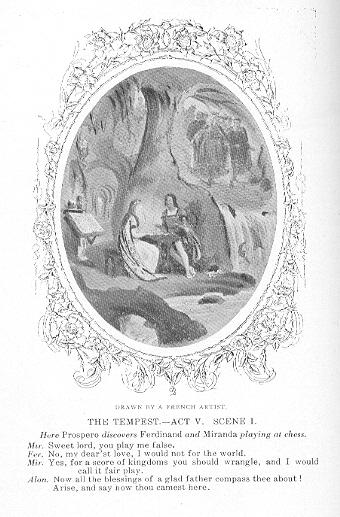
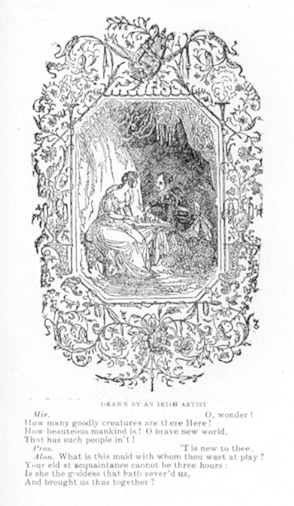
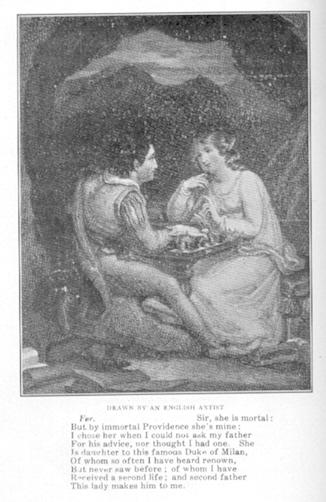
‘Altogether we consider there is sufficient evidence to show that W.S. must have known “the moves”. But whether he ever became a real chessplayer is uncertain.
He probably understood draughts, which was well known in and before his time. But we have found no mention of the game of draughts, dames or checkers in his works. He refers to backgammon, then known as tables, and one variety as tic-tac. And to billiards. Also to several card games. Some of the outdoor games are mentioned, but not cricket.’
‘In John’s time the queen did not “check the world” and was a weak piece, but Shakespeare either did not know or did not care about that. To him and his audience the chess queen was the same as now – had been in England for 60 years or more.’
Branch concluded:
‘The late Sir Sidney Lee, the biographer of Shakespeare, in correspondence with the present writer, agreed that the line in King John clearly referred to the chess queen, and showed that Shakespeare knew that the queen was, as now, the most powerful piece in the game. Knowing that, he would in all probability know the other moves.’
It may be noted that the above-quoted remark by Elinor in King John was annotated by Staunton as follows:
‘It has been doubted whether Shakespeare, who appears to have had cognizance of nearly every sport and pastime of his age, was acquainted with the ancient game of chess; we believe the present passage may be taken to settle the question decisively. The allusion is obviously to the queen of the chess board, which, in this country, was invested with those remarkable powers that render her by far the most powerful piece in the game somewhere about the second decade of the sixteenth century [sic].’
‘An exhibit which played an important part in adding to the attractiveness of the setting in which Capablanca displayed his prowess was a portion of the collection of unique chessmen owned by G.A. Pfeiffer of the Marshall Chess Club ...
Not far from the glass case, in which they were tastefully arranged, was hung a large oil painting of Shakespeare and Ben Jonson playing chess, owned by Frank de Heyman of Brooklyn, with the history of which readers of the Bulletin have already been made acquainted.’
In 1976 the alleged Shakespeare v Jonson painting was featured on a Nicaraguan postage stamp; see pages 57 and 92-93 of Persönlichkeiten und das Schachspiel by B. Rüegsegger (Huttwil, 2000). Any further information on this entire subject will be welcomed.
(4051)
Another correspondence game involving J.W. Shaw (who was White against J.E. Narraway) was given with Shakespearean quotations on pages 336-339 of the October 1882 BCM. The magazine expressed the belief that the quotations had been selected by Shaw.
C.N. 4051 focussed on older chess literature, but Mark N. Taylor (Mt Berry, GA, USA) mentions a later article about the alleged Shakespeare-Jonson painting which is too good to be passed over: ‘Shakespeare’s Checkmate’ by Paul Leith on pages 8-13 of Chessworld, January-February 1964. Page 11 has a close-up of the board which readers may care to scrutinize:
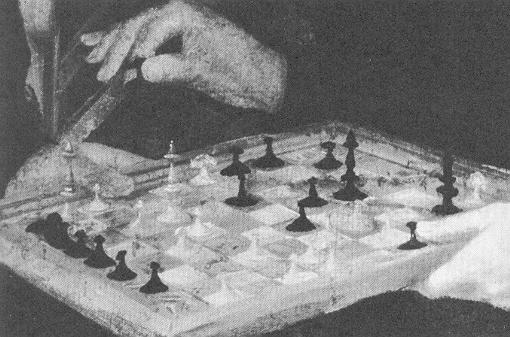
(4054)
Also from Mark N. Taylor:
‘A few comments on inaccuracies in the December 1915 American Chess Bulletin report on the van Mander painting:
“The mediaeval shapes”: the shapes are not medieval at all, even granting the wide variety of medieval chess pieces.
“The same designed bishops are given in the diagrams of the Alfonso Spanish 1283 Manuscript”: the bishops are not at all similar. In the Alfonso MS they resemble an old coffee pot. A modern font modelled on their design may be seen at Sonja Musser Golladay’s website.
“The double-headed rook appears in Caxton’s London 1480 edition”: this piece does resemble the older style rather than the more modern tower, but does not appear to be bifurcated as medieval rooks (including Caxton’s) usually are. These may be easily compared with those pieces pictured in Murray or the better coffee-table books on chess pieces.
More nonsense in the May 1916 Chess Amateur on “Shakespeare’s genuine death mask”; there is no such thing and there is no telling what the author is referring to.
A general remark: perhaps some 90% of what appears in most biographies of Shakespeare consists of legend, conjecture, and fancy – we have so few facts – so it is no surprise that most of what is written on Shakespeare and chess is mostly fancy. S. Schoenbaum, the author of the only truly reliable biography, William Shakespeare: A Documentary Life, ignores both the van Mander painting and the “death mask”.’
(4069)
Mark N. Taylor writes:
‘I have recently acquired a copy of Shakespeare’s King Richard II, with illustrations by Isadore Seltzer (New York, 1975). Twenty full-page illustrations all have chess themes, even though there is no chess in the play itself.’
A sample provided by our correspondent is given below:
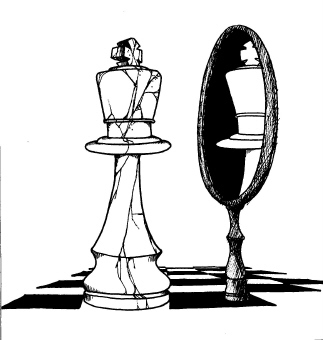
(4176)
Three correspondents offer information about Howard Staunton’s standing as a Shakespearean scholar.
Hassan Roger Sadeghi (Lausanne, Switzerland) draws attention to the Shakespeare’s Editors webpage on Staunton, which quotes from the entry on the latter in the 1909 edition of the Dictionary of National Biography.
Robert John McCrary (Columbia, SC, USA) refers to the 1979 edition of Staunton’s work published by Park Lane, New York:
‘The Foreword, by Solomon J. Schepps, comments on page xiv that Staunton:
“... was one of the great Shakespearean scholars of his age. His knowledge of the texts themselves and of Elizabethan language and customs was enormous. And, equally to his credit, he understood the importance of including extra material in this edition.”
However, in the 1969 Pelican Shakespeare I can find no mention of Staunton, although other nineteenth-century volumes by other editors are cited.’
From William D. Rubinstein (Aberystwyth, Wales):
‘Staunton’s name can be found in modern reference books on Shakespeare, but only briefly and not invariably. For instance, he does not appear at all in Shakespeare’s Lives by S. Schoenbaum, the standard work on how Shakespeare has been discussed and examined since his death. Staunton’s views on the meaning of a word in Shakespeare are occasionally cited in recent editions of the plays, such as the Arden and Oxford publications, but, again, not often.’
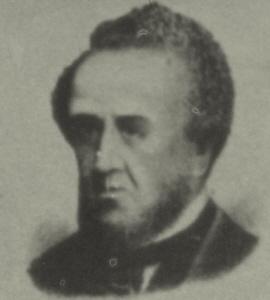
Howard Staunton
Finally for now, we add a brief item from page 81 of the February 1888 BCM:
‘In the course of a speech which Mr Routledge, the eminent publisher, made lately at a complimentary dinner, he paid a high tribute to the literary abilities of the late Howard Staunton, and stated that his firm had paid that gentleman £1,000 for editing his edition of Shakespeare. The work was a labour of love on the part of the great chessplayer, but nevertheless the payment would be welcome.’
(5516)
From Richard Allen (Cambridge, England):
‘The commentary on this subject in C.N. 5516 indicated that while Howard Staunton was a Shakespearean scholar and editor of considerable learning and distinction in his own time, his contribution to this field is only briefly and occasionally recognized today. This is unsurprising, given that Shakespeare studies have become a mass global industry in the modern age. Indeed, one aspect of this development, large collaborative projects supported by prestigious institutions, was already under way in Staunton’s own day. His three-volume edition of Shakespeare’s plays (1858) may have earned him £1,000 but it was a labour of love on the part of a self-taught, unaffiliated amateur. It nevertheless won plaudits for its careful and judicious collation of available texts, as well as for other virtues to which I shall return. Unluckily, however, it was rather overshadowed by the appearance only five years later of The Cambridge Shakespeare (1863-66), edited by W.G. Clark, J. Glover and W.A. Wright. This publication, according to J. Isaacs on pages 305-324 of Shakespearian Scholarship, A Companion to Shakespeare Studies by H. Granville-Barker and G.B. Harrison (Cambridge, 1934), “was the great landmark [in Shakespearean scholarship] of the mid-century ... Its rigorous system of collation was facilitated by [Edward] Capell’s superb bequest of quartos to Trinity College’ (page 314). Two further landmarks of collaborative scholarship, J.J. Furness’s New Variorum Edition and the foundation by F.J. Furnivall (“a team-leader”, according to page 315 of Isaacs’ work) of the New Shakspere [sic] Society, followed in 1871 and 1872 respectively. By comparison with these monumental enterprises, Staunton’s achievements must already have appeared somewhat modest by the time he died in 1874.
That, however, is by no means the whole story. Both The Cambridge Shakespeare and Furness’s Variorum were produced by academic specialists for an academic audience; they were tomes to be consulted mainly in university libraries. Staunton’s edition, by contrast, was produced for the general public, first appearing – like a Dickens novel of the same period – in shilling monthly parts. And again like a Dickens novel, only more so, it contained an abundance of distinctive illustrations; there were some 831 sketches by John Gilbert, all engraved by the Dalziel brothers, making Staunton’s edition, according to Peter Holland – see page 65 of volume one of Performing Shakespeare in Print: Narrative in Nineteenth-Century Illustrated Shakespeares, Victorian Shakespeare by G. Marshall and A. Poole (London, 2003) – “the most popular of mid-nineteenth-century illustrated Shakespeares”. The combination of popular appeal and editorial standards that were still acceptably high accounts for its twentieth-century reprint (referred to in C.N. 5516), which remained in print until the early 1990s – “an extraordinary longevity for any Shakespeare edition”, as Holland remarks (volume one, page 67).
There were many illustrated Shakespeares published in the nineteenth century, but in even some of the more notable, such as Charles Knight’s National Edition of 1851, the pictures tend to be undramatic and de-contextualized. In Staunton’s edition, on the other hand, Gilbert’s prodigiously numerous sketches are embedded in the text, providing dramatic vignettes from various distances and perspectives, and foregrounding character. Thus, argues Holland, was “created a dramatic narrative of performance, as close an interconnection between illustrations and the performed text ... as the century could ever have hoped to achieve” (Marshall and Poole, volume one, page 71).
While naturally keen to represent Gilbert as “the powerhouse for the edition” (Marshall and Poole, volume one, page 68), Holland acknowledges Staunton’s “decent and honourable” editing (page 68) and notes that a few of his emendations have retained acceptance among modern editors. The tribute is very much to the point but perhaps understates Staunton’s achievement. The main reason for the small number of emendations retained today is that Staunton actually proposed only a few. This was in keeping with the deliberate modesty and moderation of his whole editorial approach, in which a wide range of available readings has been considered but the oldest (quarto) ones usually adopted unless there is a strong case against. Staunton’s methods need to be seen in the context of the sensational forgeries perpetrated by a leading Shakespearean of the day, J. Payne Collier. In 1853, Collier published Notes and Emendations to the Text of Shakespeare’s Plays, in which he listed marginal annotations in a seventeenth-century hand purportedly discovered in a copy of the Second Folio he had bought in a bookshop. The authenticity of this discovery was soon questioned, but the document and numerous others that Collier claimed to have found were not conclusively proved to be forgeries until 1859. In a detailed account of this shocking case in the Preface to the 1860 edition of his Shakespeare, Staunton states that he himself instigated the scrutiny of the fabricated documents by Sir Frederic Madden, N.E. Hamilton, and other professional “paleographers” at the British Museum; he was prompted, he says, by a sense of responsibility to have the issue determined before his own editorial project saw the light of day. The investigation took longer than anticipated because of Collier’s obstructiveness, but it is clear that Staunton’s commitment to “decent and honourable” editing was reinforced by Collier’s gross transgression of such standards. Staunton’s other major publication in the field, Memorials of Shakespeare (1864), a collection of photolithographic facsimiles of extant documents such as the dramatist’s will and the indentures of conveyance and mortgage of his house, can be seen as similarly motivated by a desire to help restore the values of fidelity and authenticity to popular Shakespeare scholarship.
The essay on Staunton on pages 319-321 of volume 52 of the new Dictionary of National Biography by H.C.G. Matthew and Brian Harrison (Oxford, 2004), an updating by Julian Lock of Sidney Lee’s original article, recognizes his immense contribution to the world of chess while noting flaws of personality displayed therein – for example, his tendency to become involved in vendettas and the hint of class snobbery betrayed in his leadership of St George’s feud with the London chess club. It is interesting that such weaknesses seem much less evident in Staunton the Shakespearean. In his strictures on Collier’s malpractice he does not resort to personal denigration, and he even deprecates the undue “stringency” of a previous attack on the wretched forger. And though largely forgotten today, his own distinctive achievement in this field was to produce a reputable version of Shakespeare in an accessible and attractive format.’
(5603)
C.N. 4870 invited readers to identify the person whose obituary stated that ‘a man of his literary distinction is an honour to the game’ – a nineteenth-century figure who died in his sixties and was known not only for his activity in the chess world (e.g. the Chess Player’s Chronicle and the Illustrated London News) but also for his writings on Shakespeare as from circa 1860.
It was not Howard Staunton (1810-74) but Clement Mansfield Ingleby (1823-86). Below is the complete obituary published on page 416 of the November 1886 BCM:

(4876)
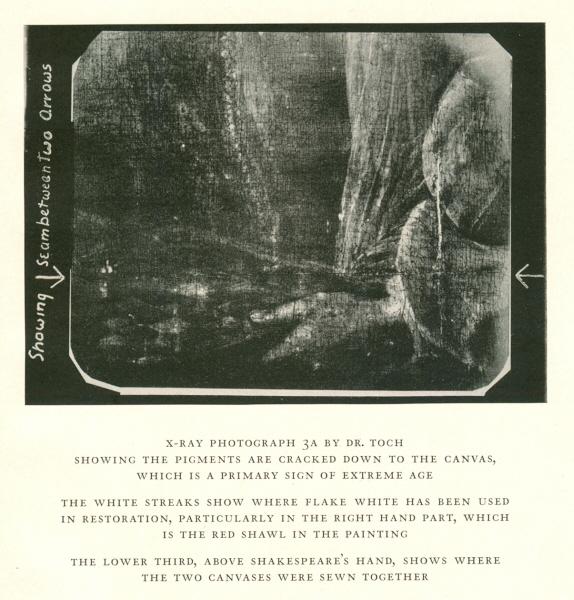
The above illustration appeared between pages 80 and 81 of An Authenticated Contemporary Portrait of Shakespeare by Tracy Kingman (New York, 1932). This illustration was the frontispiece:
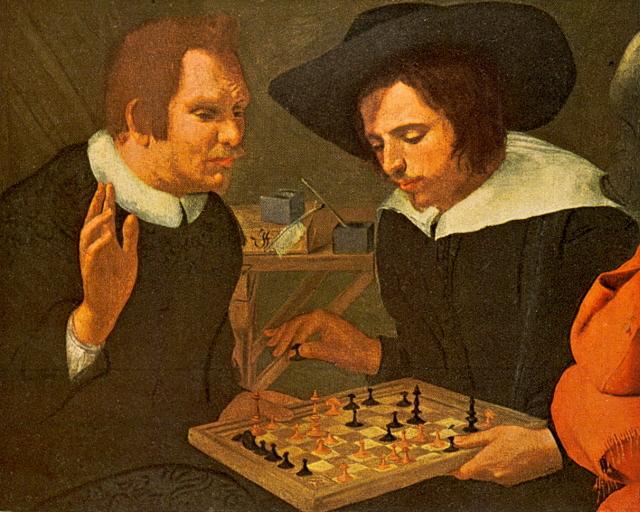
(5699)
An article ‘Shakespeare’s Silence About Chess’ by H.A. Kennedy was published on pages 193-196 of the Chess Player’s Magazine, July 1866. The September 1866 issue (pages 260-262) published a letter from Nathaniel Ramsay Waters (London, 10 August 1866).
Michael Clapham (Ipswich, England) notes that H.A. Kennedy wrote further on page 69 of the March 1867 Chess Player’s Magazine:
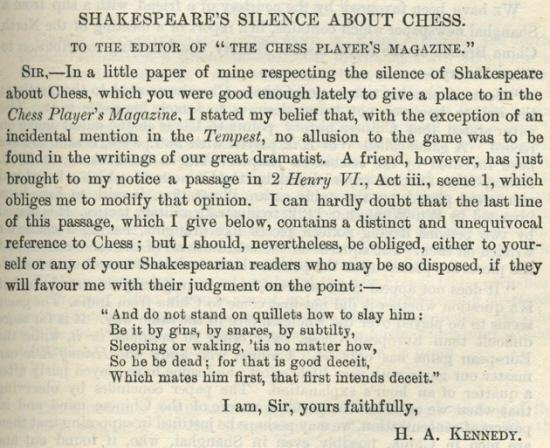
See the item below concerning the Westminster Papers.
From page 67 of Chess in Bedfordshire by F. Dickens and G.L. White (Leeds, 1933):

On page 134 of the 1 November 1873 issue of the Westminster Papers H.A. Kennedy suggested that, in addition to The Tempest, there was ‘a distinct and unequivocal reference to chess’ in Henry VI Part II (act three, scene one), on the strength of the word ‘mates’ (‘Which mates him first that first intends deceit’). In a letter published the following month (1 December 1873, pages 157-158) Edmund Thorold stated that in the English of Shakespeare’s time the verb in question ‘had long ceased to convey any special connotation in reference to chess’, and on page 178 of the 1 January 1874 issue Kennedy withdrew his suggestion.
A further contribution from Kennedy, concerning King John, was published on page 42 of the Westminster Papers, 1 July 1876.
Further to a tip-off from Ross Jackson (Raumati South, New Zealand) we have been reading ‘False Play: Shakespeare and Chess’ by William Poole on pages 50-70 of the Spring 2004 Shakespeare Quarterly.
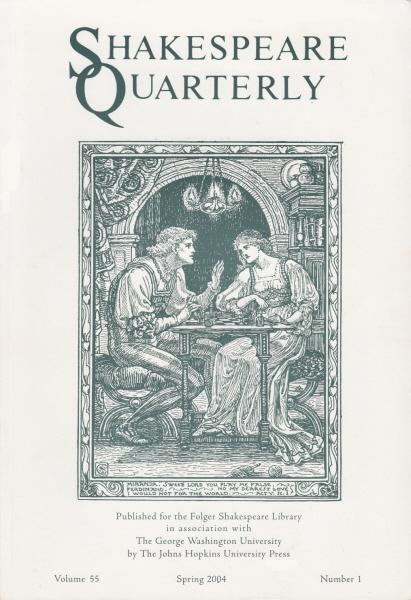
With Dr Poole’s kind permission, a page is shown here:
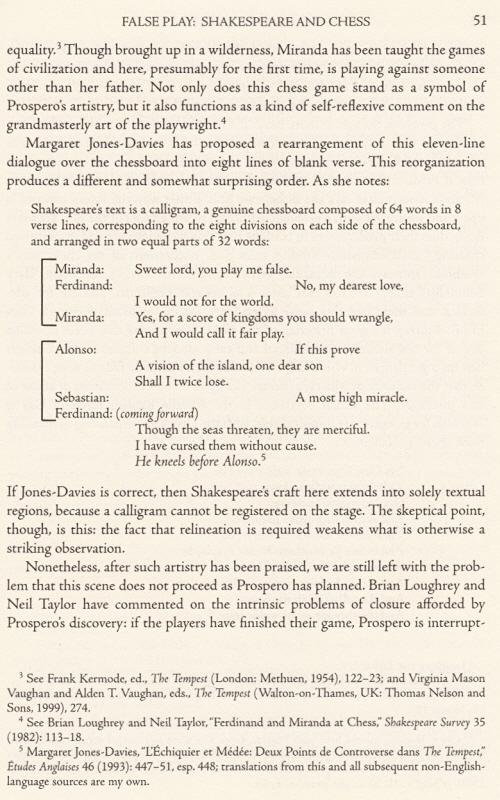
(7443)
From page 20 of the 1 June 1872 Westminster Papers:
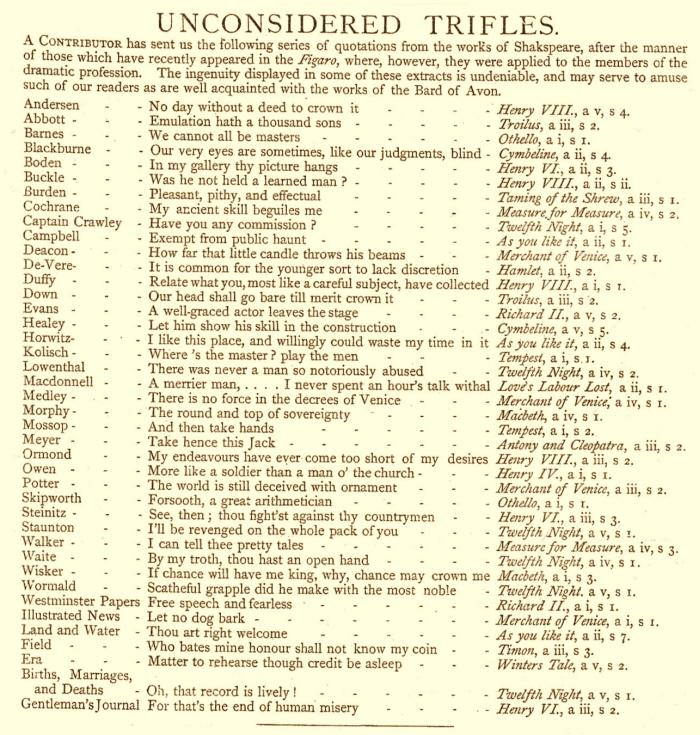
1 e4 e5 2 Nf3 Nc6 3 Bc4 Nf6 4 d3 h6 5 Nc3 Bb4 6 O-O Bc5 7 Nd5 O-O 8 a4 a6 9 Be3 Bxe3 10 fxe3 d6 11 Nxf6+ Qxf6 12 Nd4 Qg5 13 Nxc6 bxc6 14 Qf3 Be6 15 Bxe6 fxe6 16 Qh3 Qe7 17 Rf3 Rf6 18 Raf1 Raf8 19 g4 d5 20 Qg3 d4 21 exd4 exd4 22 Rxf6 Rxf6 23 Rxf6 Qxf6 24 Qxc7 e5 25 Qc8+ Kh7 26 Qf5+ Kg8 27 Qxf6 gxf6 28 h4 Kf7
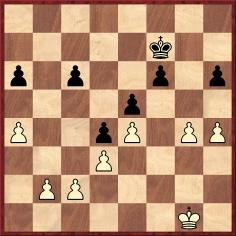
29 c4 dxc3 30 bxc3 Kg6 31 Kf2 h5 32 Kf3 Kh6 33 d4 hxg4+ 34 Kxg4 exd4 35 cxd4 Kg6 36 h5+ Kf7 37 Kf5 Ke7 38 Kg6 Ke6 39 h6 Ke7 40 h7 Ke6 41 h8(Q) Ke7 42 Qxf6+ Kd7 43 Qf5+ Kd6 44 Qc5+ Kc7 45 Qa7+ Kd6 46 Qxa6 Kc7 47 a5 Kd6 48 d5 Kc5 49 Qxc6+ Kd4 50 d6 Ke5 51 d7 Kf4 52 d8(Q) Ke5 53 a6 Kf4 54 a7 Ke5 55 a8(Q) Kf4 56 Qab8+ Kg4 57 e5 Kf4 58 e6+ Ke3 59 e7 Kf2 60 e8(Q) Kf1 61 Qcc8
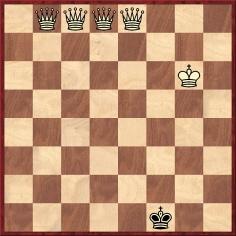
61...Kf2 62 Qf6+ Kg2 63 Qg4+ Kh1 64 Qh2+ Kxh2 65 Qeh8 mate.
The above game, given in C.N. 7806, comes from pages 260-261 of the September 1961 Chess Life:
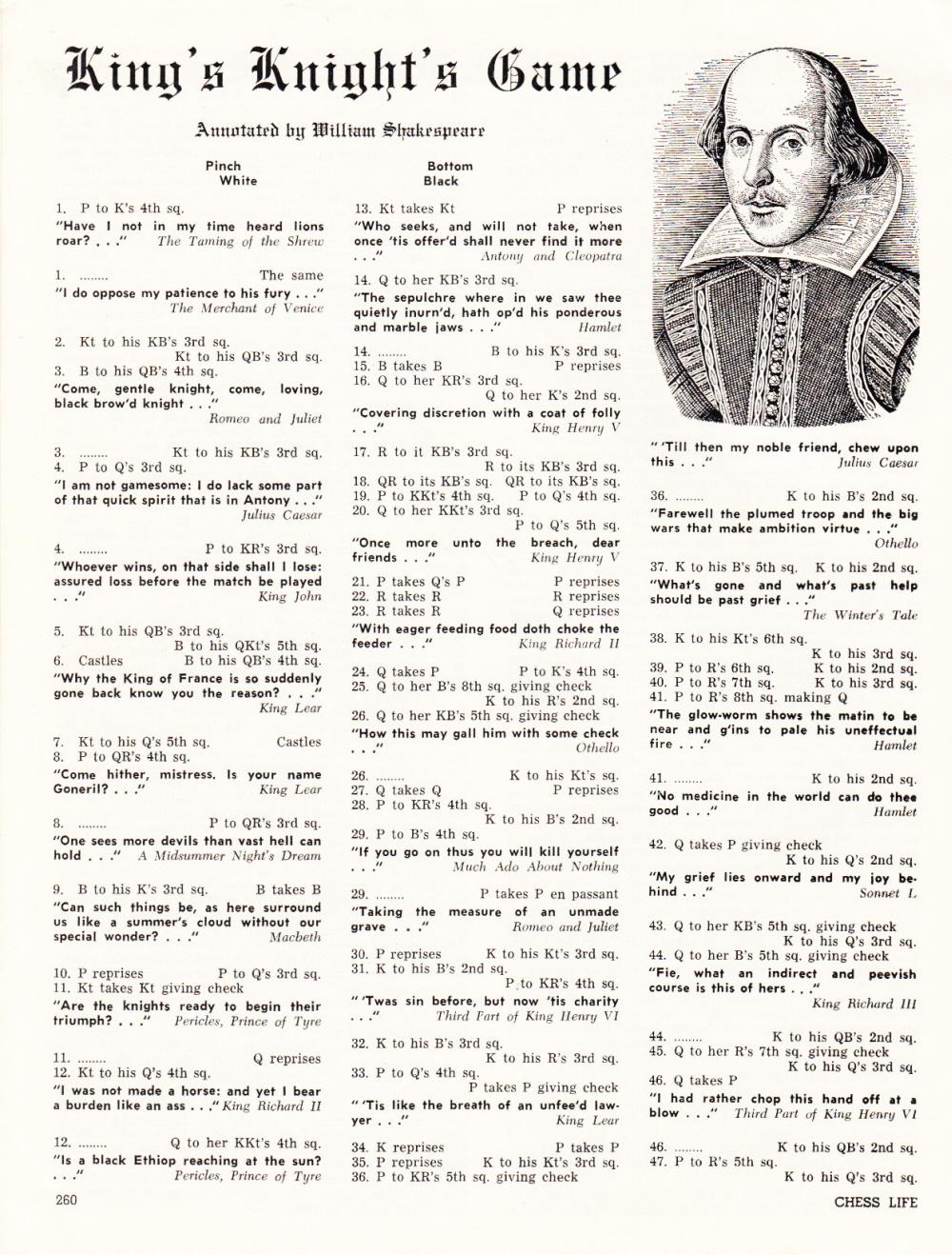
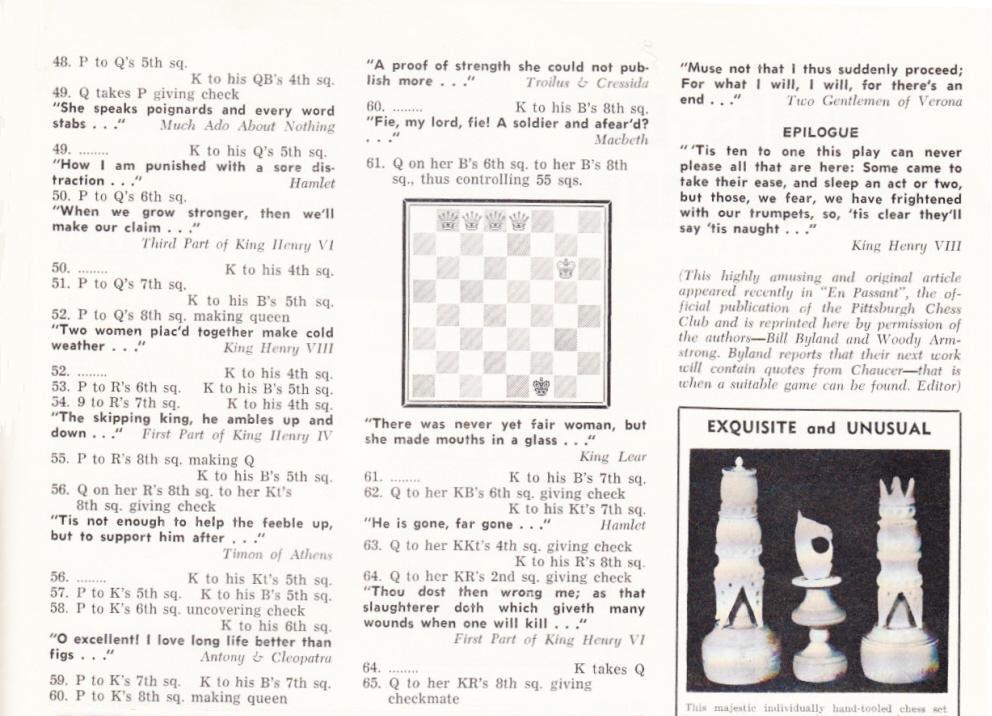
Pages 50-51 of “Among These Mates” by Chielamangus (Sydney, 1939) had a light sketch, ‘Shakespeare: Chess Fan’, reproduced from the Sydney Telegraph, 1934.
From Howard Staunton’s edition of the complete works of Shakespeare (volume three, page 43) comes the reference to chess in Act V Scene I of The Tempest:
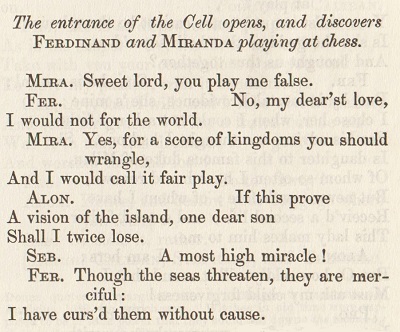
The comments below are taken from page 5 of the October 1907 Chess Amateur, in the ‘Questions and Answers’ column conducted by H.G. Bockett-Pugh:
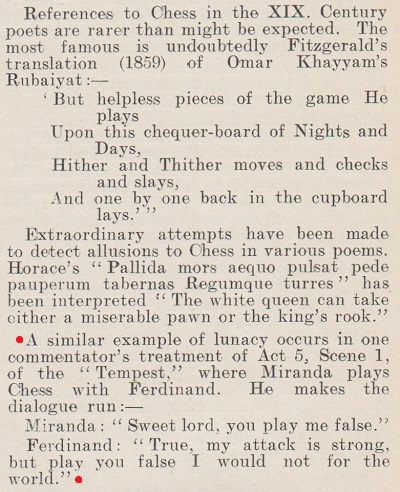
(10683)
Jean-Pierre Rhéaume (Montreal, Canada) points out that Lasker’s Manual of Chess ascribes the phrase ‘as cheap as blackberries’ to Hamlet (instead of Falstaff, in Henry IV Part I, act two, scene four – ‘if reasons were as plenty/plentiful as blackberries’). In the Manual page numbers vary from one edition to another; the reference is in the opening paragraph of the section entitled ‘The History of Planning in Chess’ in the Fourth Book. In German editions the text read ‘billig wie Brombeeren’, also with Hamlet mentioned incorrectly.
In a 1919 interview Capablanca was quoted as saying that he was an admirer of Shakespeare (C.N. 12072).
Addition on 18 January 2025:
The feature mentioned in C.N. 4051 is given below. It appeared in the Pittsburgh Gazette Times on 23 April 1916 (page 9 of the fifth section) and on 28 May 1916 (page 3 of the sixth section).
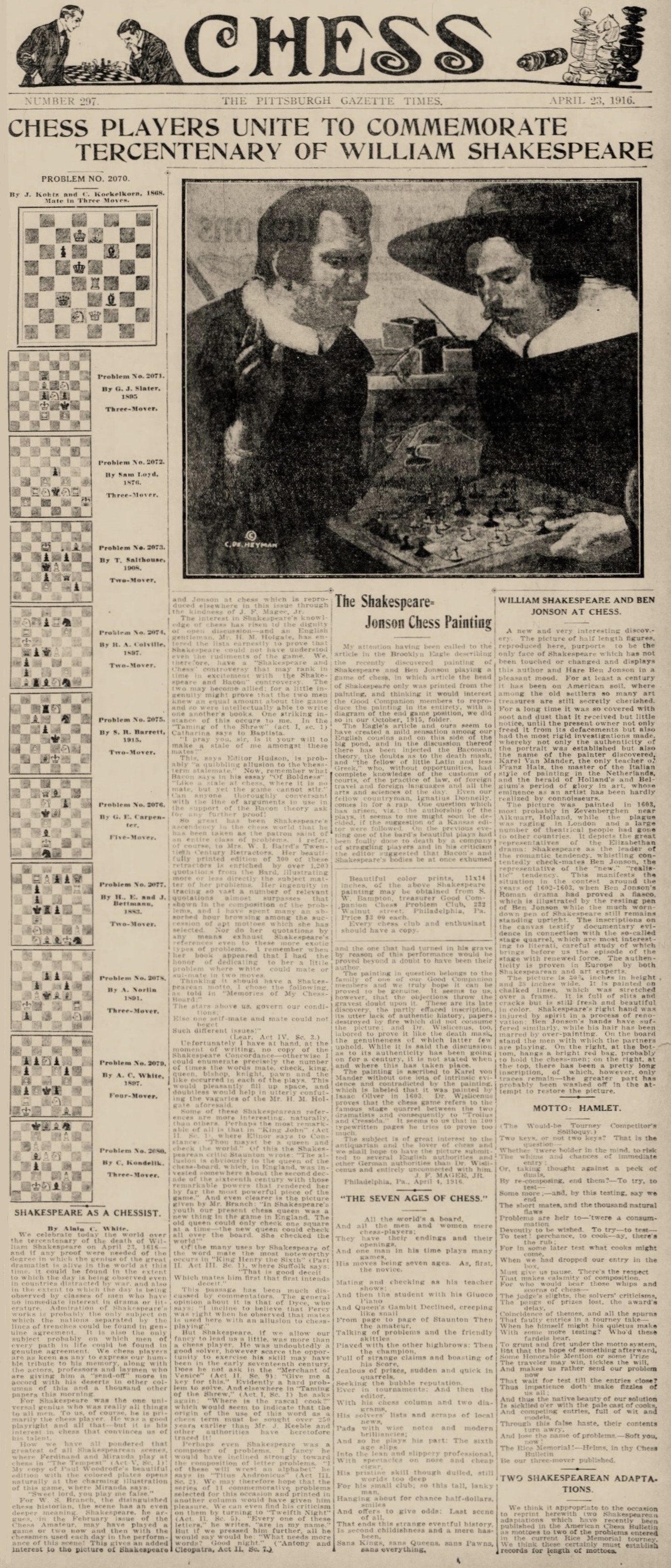
Below is the full text of the above-mentioned article in the Cheltenham Chronicle [and Gloucestershire Graphic], 22 September 1923, page 4:

From page 3 of the Newcastle Daily Chronicle, 27 July 1874:
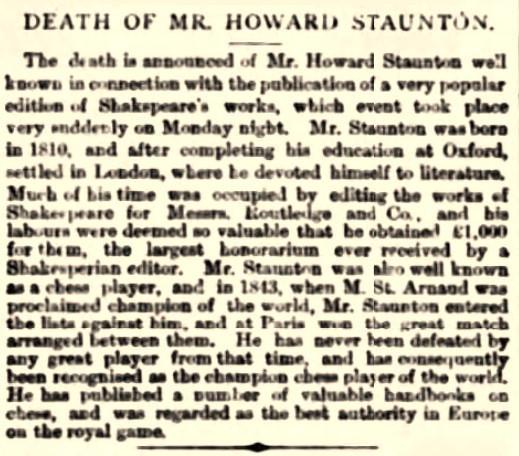
Chess is not mentioned until the latter part of the report, but the statement that Staunton ‘has consequently been recognised as the champion chess player of the world’ is noteworthy and is being added to Early Uses of ‘World Chess Champion’.
(12116)
Below is the obituary of Howard Staunton on page 4 of The Scotsman, 29 June 1874:

Beyond such curiosities as ‘a native, we believe, of Warwickshire’, ‘educated at Eton and Oxford’ and ‘the conqueror of Murphy’, the text illustrates how mainstream obituaries of Staunton might focus on Shakespeare and not chess. The English-language Wikipedia article on Staunton does the reverse.
(12127)
Note: until 16 June 2021 our feature article was entitled ‘Chess and Shakespeare’.
To the Chess Notes main page.
To the Archives for other feature articles.
Copyright: Edward Winter. All rights reserved.